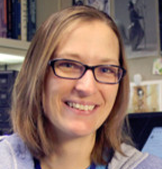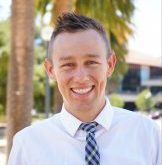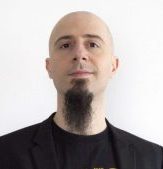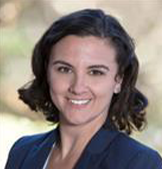Associate Members
Researchers who wish to work with the HuBMAP Consortium but are not currently part of a funded group may apply to become Associate Members, as outlined in the Associate Member Policy. These members contribute to the goals of HuBMAP through collaborative research efforts and involvement in working groups, and are actively engaged in Consortium activities.
Current Active Associate Members:

Kristen Browne
National Institute of Allergies and Infectious Diseases
As a 3D Modeling and Medical Imaging Specialist with NIAID, Browne is integral to the effort between HuBMAP and NIAID to create anatomically correct, semantically annotated 3D models of human body parts for use in the development of the Common Coordinate Framework (CCF). The CCF is used for various open source tools and resources such as the Exploration User Interface (EUI) and Registration User Interface (RUI), and the Anatomical Structures, Cell Types and Biomarkers (ASCT+B) Tables. Browne brings her medical illustration skills to the CCF team for the development of these vital resources.

Ronald Germain
National Institutes of Health
Dr. Germain is involved with the same effort as Dr. Radtke, through his role as Chief of LSB and LISB, and Director of CAT-I. The effort that Drs. Germain and Radtke will contribute to as HuBMAP associate members will provide a practical means to catalogue the variety of cell types present in the human body using antibody-based multiplexed imaging. In addition to its alignment with the stated mission of HuBMAP, this work will centralize information on the cellular composition of tissues, spatial patterning of biomarkers, and antibody search engines into one location.

Marc Halushka
Johns Hopkins School of Medicine
Dr. Halushka is a clinical cardiovascular pathologist working on a spatial proteomic heart project. He has begun collaborating with HuBMAP members, and in his work as an associate member, the aim is to generate significant spatial proteomic data using multiplexed IHC, digital slide scanning, and computational co-expression analysis across 16 cardiac regions. The contributions from Dr. Halushka’s work will include digital images and expression analysis of these images of cardiac tissues demonstrating patterns of cardiomyocyte cell states in health and disease, which will be stored on HuBMAP channels.

John Hickey
Duke University
John is an Assistant Professor at Duke University, and has been actively involved with HuBMAP for over four years. John has led spatial analyses of the healthy human intestine and collaborated on projects to enhance our understanding of cell populations within functional tissue units (FTUs) using spatial-omics approaches. His work includes developing methods for hierarchical cell neighborhood computation, publishing protocols for CODEX multiplexed imaging, and optimizing data processing. John has co-organized junior investigator cross-consortia meeting, initiated collaborations, and actively participates in various working groups. As an Associate Member, John looks forward to continued contributions to HuBMAP, including data collection, computational pipeline development, and algorithm application.

Valerio Izzi
University of Oulu
Dr. Izzi is currently an Associate Professor of Bioinformatics (tenure track) at the Faculty of Biochemistry and Molecular Medicine, University of Oulu, Finland. Research in Dr. Izzi's group focuses strongly on the production of new algorithms and methods for the analysis of cell-microenvironment interactions in health and diseases, especially in cancer. Dr. Izzi and Prof. Naba (PI of the University of Illinois Chicago Demonstration Project) have been collaborating since 2019. Dr. Izzi's collaboration with HuBMAP provides expertise in matrisome systems biology as well as algorithmic and software development.

Andrea Radtke
National Institutes of Health
Dr. Radtke is working on the development of a graphical user interface to provide a simple way for researchers to design tissue-specific panels using antibodies and domain knowledge. This effort involved collaboration between the Laboratory of Immune Systems Biology (LISB) and its associated Center for Advanced Tissue Imaging (CAT-I, a joint intramural research program activity of the National Institute of Allergy and Infectious Diseases (NIAID) and the National Cancer Institute (NCI) of the National Institutes of Health (NIH)), and HuBMAP’s Affinity Reagent Imaging & Validation and ASCT & B Working Groups, both of which Dr. Radtke has been actively involved with.

Francesca Soncin
UC San Diego
Dr. Soncin is working in collaboration with the UC San Diego Female Reproductive System Tissue Mapping Center, where they have a longstanding partnership in the Center for Perinatal Discovery. With a background in stem cell biology, Dr. Soncin will continue her work with the UC San Diego group, and will work with other HuBMAP researchers within her specialty area.

Caterina Strambio
University of Massachusetts Medical School
Dr. Strambio-De-Castillia is a Faculty member at UMass Medical School and a Chan Zuckerberg Initiative Imaging Scientist. She has multifaceted training spanning cellular biology, biochemistry, mass spectrometry, virology, electron and light microscopy, computer science, and image research data management.
She has an ongoing interest in elucidating the fundamental principles governing the intracellular trafficking of viruses and the dynamic regulation of nucleocytoplasmic transport as it interfaces with nuclear envelope structure and with chromatin organization and function.
The recent focus of her work is to increase the impact and efficiency of biomedical research by supporting the generation and stewardship of high-quality, reproducible, and reusable quantitative image data in compliance with the NIH Data Management and Sharing policy. To achieve this goal, her lab develops and promotes the use of reliable, user-friendly, easy-to-use, and, when possible, automated cyberinfrastructure and tools that assist research scientists in handling all stages of the image data life cycle from sample preparation to publication. To ensure adherence to community-developed best practices, we work in close collaboration with both national and international imaging initiatives such as BioImaging North America, Global BioImaging, the Open Microscopy Environment consortium, and QUAREP-LiMi (Quality Assessment and Reproducibility in Light Microscopy).
